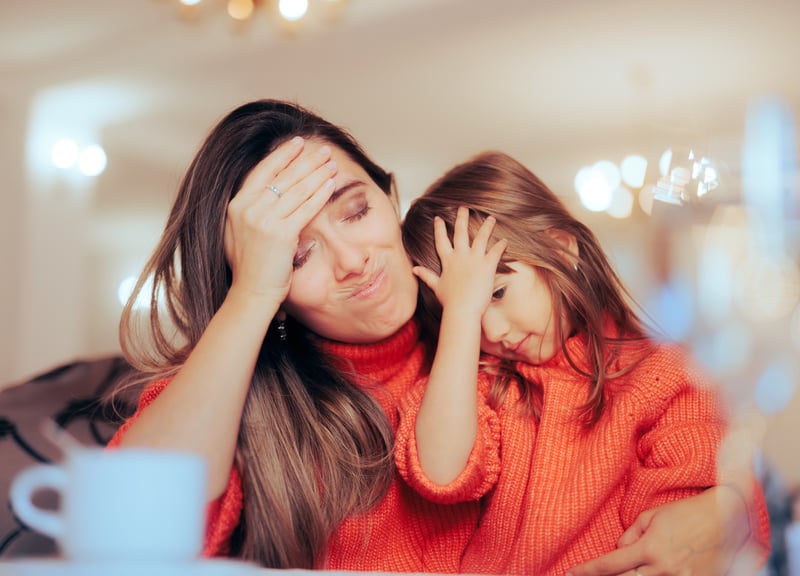Get Healthy!

- Posted March 13, 2023
How to Help Your Child Deal With Separation Anxiety
For some children, it can be hard when mom or dad leave them at daycare, school or even just with the other parent.
It's normal for small children to feel some separation anxiety.
But it can be more concerning when a child doesn't outgrow these feelings or feels them very intensely. This significant fear is known as Separation Anxiety Disorder (SAD).
"It's rare that separation anxiety persists on a daily basis after the preschool years. If you're concerned that your child isn't adapting to being without you, chat with the pediatrician,"Dr. Wendy Sue Swanson, a member of the American Academy of Pediatrics Council on Communications and Media, suggested in a story about separation anxiety for the American Academy of Pediatrics (AAP).
What is separation anxiety?
Fear or acting out because of a desire to not be separated from a parent is normal for babies ages 9 to 18 months old, according to the Children's Hospital of Philadelphia (CHOP).
It can even start as early as 4 to 5 months, according to the AAP.
It typically ends around age 2, according to the National Library of Medicine. That's when kids are old enough to understand that after a separation their parents will return.
But about 3% of kids continue to experience these feelings into elementary school, according to CHOP. That can increase again during adolescence, as about 8% of teens have separation anxiety because of concerns about how violence or accidents may separate them from a caregiver.
Different from typical separation anxiety, SAD is an intense fear, according to the Cleveland Clinic. It can lead to mental and physical issues, affecting work, school and a child's social life.
It might be SAD if it continues to disrupt your child's life and your family life, according to Boston Children's Hospital.
About 4% of children experience SAD, according to the hospital.
Symptoms
When an infant or toddler is experiencing separation anxiety, it can be loud, with lots of tears and tantrums.
Separation anxiety might be worse if your infant or young child is hungry, tired or feeling ill, according to the AAP.
A child dealing with more significant separation anxiety, such as SAD, may have a number of physical symptoms such as vomiting and nausea, quick breathing, fatigue, headache, stomachache and bedwetting.
The worry is often about something that isn't likely to happen, such as death or harm to a loved one or the child, fear of being alone or worry about having nightmares, according to Boston Children's.
Symptoms of SAD tend to start around third or fourth grade, according to Stanford Medicine Children's Health. It might happen after your child has been closer to you for a while, such as during summer vacation.
Some other common symptoms are clinginess, panic attacks or tantrums when it's time to separate and refusing to sleep alone or to go to school.
Risk factors
SAD can be rooted in a variety of factors, according to Stanford and CHOP. This includes:
- A traumatic event, including a death in the family or parental separation/divorce
- Geographic move or relocation
- Change of school or home
- Parental absence
- Foster care/adoption
- Parental alcoholism
- Biology, such as with an inheritance of an imbalance in the brain chemicals norepinephrine and serotonin.
A study published recently in the journal JAMA Network Open found that children may learn anxious behavior from a parent, but that it isn't inevitable and is treatable.
"Parents should seek help with their own anxiety, not just for their own health but also for the health of their children," study author Barbara Pavlova, a clinical psychologist in the mood disorders program at Nova Scotia Health Authority in Halifax, Canada, said at the time.
How to deal with separation anxiety
When it's typical separation anxiety in young children, the AAP suggests creating quick farewell rituals that are consistent.
Don't return to the room after you've left, the AAP recommends, and don't cancel plans based on your child's separation anxiety.
CHOP recommends not sneaking away while your child is distracted. Also, validate your child's feelings by allowing them to talk, share worries and cry.
You should be fully attentive, loving and affectionate to your child at separation time, the AAP suggests.
Be specific about when you'll return, and build trust and independence by sticking to your promise about when your return will happen.
Practice being apart through playdates and weekends at Grandma's house, the AAP says.
When to seek help
Talk to your pediatrician if your child's separation anxiety continues past the typical age, the AAP suggests.
Early treatment for SAD can lessen symptoms, according to Stanford Health. Treatment can include cognitive behavioral therapy and anti-anxiety medications.
Some ways you may be able to help your child deal with SAD are to offer reassurance and encourage age-appropriate independence. Know what stresses your child and plan ahead, Stanford suggests.
You may need to talk with your child's teacher about the circumstances and ask them to provide extra reassurance and support.
